Items Under Tag: international comparisons
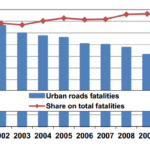
Road Safety in Urban Areas in the EU is highlighted at the Traffic Safety Basic Facts 2012 available at the Road Safety Knowledge System of the DACOTA project within the framework of the European Road Safety Observatory of the European Commission. 10.837 people were killed in traffic accidents on urban roads in the EU countries in 2010, repersenting38% of the total road traffic fatalities. Fatalities on urban roads were reduced by 39% between 2001 and 2010. 
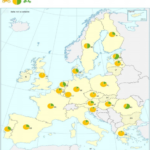
Road Safety of Motorcycles and Mopeds in the EU is highlighted at the Traffic Safety Basic Facts 2011 recently released at the European Road Safety Observatory of the European Commission as prepared by the DACOTA project. In 2009, 1.209 riders (drivers and passengers) of mopeds and 4.905 riders of motorcycles were killed in road traffic accidents in the EU countries, repersenting 16% of the total road traffic fatalities. 
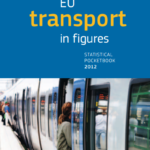
The Directorate General for Mobility and Transport (DG Move) of the European Commission released the Statistical Pocketbook 2012 ‘EU Transport in figures‘. In this Statistical Pocketbook, key road safety Tables are contained, together with several other Tables on transport statistics, providing a complete picture of current trends in transport in Europe. Data on road fatalities for the EU member states and associate countries allow for time series comparisons and country rankings. 
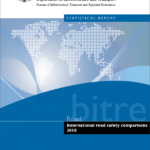
The Department of Infrastructure and Transport of the Australian Government has recently published a statistical report. The report presents summaries of road deaths and road death rates for Organisation for Economic Co-operation and Development (OECD) nations and Australian states and territories. The rates allow for a comparison of Australia’s road safety performance with that of other OECD nations by accounting for the differing levels of population, motorisation and distances travelled. 
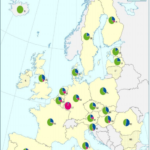
Road Safety of single vehicle accidents in the EU is highlighted at the Traffic Safety Basic Facts 2011 recently released at the European Road Safety Observatory of the European Commission as prepared by the DACOTA project. More than 134.000 persons were killed in single vehicle accidents in EU within the decade 2000-2009. This number represents almost one third of all traffic accident fatalities in those countries (32%). A significant decrease of 36% in single vehicle accident fatalities is recorded during the decade 2000-2009. 
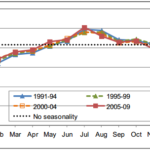
Road Safety by Seasonability in the EU is highlighted at the Traffic Safety Basic Facts 2011 recently released at the European Road Safety Observatory of the European Commission as prepared by the DACOTA project. Although the annual number of people who died in road traffic accidents in Europe has fallen over many years, the distribution of the annual number by month has scarcely changed. Motorcycling is the mode of transport with the most seasonal fatality distribution. 
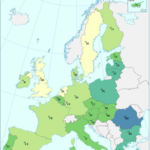
The detailed main road safety figures of the EU are highlighted at the Traffic Safety Basic Facts 2011, recently released at the European Road Safety Observatory of the European Commission as prepared by the DACOTA project. The United Kingdom, Netherlands and Sweden are the best performing EU countries, as far as fatalities per population is concerned, whereas Romania, Greece and Poland are those with the lowest performance. 
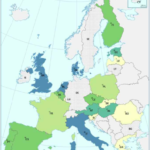
Road Safety at Junctions in the EU is highlighted at the Traffic Safety Basic Facts 2011 recently released at the European Road Safety Observatory of the European Commission as prepared by the DACOTA project. Almost 7.200 people were killed in road traffic accidents at junctions in the EU countries in 2009, representing more than 20% of the total road traffic fatalities. The fall in the number of fatalities at junctions over the past decade has broadly paralleled the fall of all fatalities. 
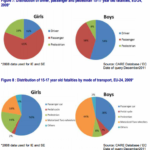
Road Safety of Youngsters in the EU is highlighted at the Traffic Safety Basic Facts 2011 recently released at the European Road Safety Observatory of the European Commission as prepared by the DACOTA project. Almost 1.000 youngsters (aged 15-17 years old) were killed in road traffic accidents in the EU countries in 2009. This figure represents a 40% decrease in relation to the 1.700 youngster fatalities since ten years before in 2000. 
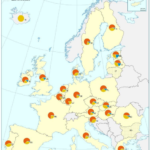
Road Safety of Young people in the EU is highlighted at the Traffic Safety Basic Facts 2010 recently released at the European Road Safety Observatory of the European Commission as prepared by the DACOTA project. 5.675 young people (aged 18-24 years old) were killed in road traffic accidents in the EU countries in 2009. This figure represents a 44% decrease in relation to young people fatalities since ten years before in 2000. 
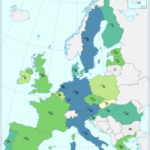
Road Safety of the Elderly in the EU is highlighted at the Traffic Safety Basic Facts 2011 recently released at the European Road Safety Observatory of the European Commission as prepared by the DACOTA project. Almost 7.000 elderly people (>64 years old) were killed in road traffic accidents in the EU countries in 2009. This figure constitutes 21,7% of road traffic fatalities of all ages in 2009. The number of elderly people who died in road traffic accidents fell by almost a quarter between 2000 and 2009. 
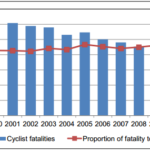
Road Safety of Cyclists in the EU is highlighted at the Traffic Safety Basic Facts 2011 recently released at the European Road Safety Observatory of the European Commission as prepared by the DACOTA project. In 2009, 2.109 pedal cyclists were killed in road traffic accidents in the EU countries, repersenting 6,6% of the total road traffic fatalities. The figure represents a 33% decrease during the decade 2000-2009. 
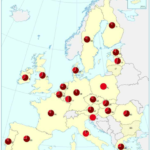
Road Safety of Heavy Goods Vehicles and Buses in the EU is highlighted at the Traffic Safety Basic Facts 2011 recently released at the European Road Safety Observatory of the European Commission as prepared by the DACOTA project. More than 4.200 people were killed in road traffic accidents involving HGVs and more than 850 people died in road traffic accidents involving buses or coaches in the EU countries in 2009. The annual number of people killed in road traffic accidents involving HGVs, buses or coaches fell by more than 40% between 2000 and 2009. 
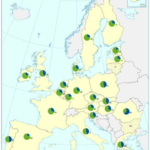
Road Safety in Urban Areas in the EU is highlighted at the Traffic Safety Basic Facts 2011 recently released at the European Road Safety Observatory of the European Commission as prepared by the DACOTA project. 12.301 people were killed in traffic accidents on urban roads in the EU countries in 2009, repersenting 38% of the total road traffic fatalities. Fatalities on urban roads were reduced by 32% between 2000 and 2009. 
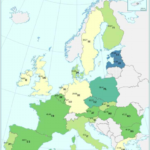
Road Safety outside Urban Areas in the EU is highlighted at the Traffic Safety Basic Facts 2011 recently released at the European Road Safety Observatory of the European Commission as prepared by the DACOTA project. More than 16.000 people were killed in traffic accidents on roads outside urban areas in the EU countries in 2009. Fatalities on roads outside urban areas were reduced by 40% between 2000 and 2009. 
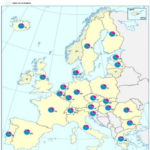
Road Safety by Gender in the EU is highlighted at the Traffic Safety Basic Facts 2011 recently released at the European Road Safety Observatory of the European Commission as prepared by the DACOTA project. In 2009, 31.978 people were killed in road traffic accidents throughout the EU, a reduction of more than 37% since 2000 (51.202). The number of people killed in road accidents in the EU decreased between 2000 and 2009 by 37% for males and 39% for females. The reductions in most countries were greater for female fatalities than for male. 
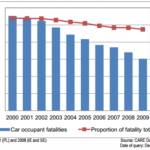
Road Safety of car occupants in the EU is highlighted at the Traffic Safety Basic Facts 2011 recently released at the European Road Safety Observatory of the European Commission as prepared by the DACOTA project. 15.158 car occupants were killed in road traffic accidents in the EU countries in 2009, repersenting 47% of the total road traffic fatalities. This figure represents a 45% decrease in relation to the 27.651 fatalities of car occupants since ten years before in 2000. 
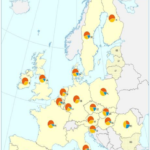
Road Safety on Motorways in the EU is highlighted at the Traffic Safety Basic Facts 2011 recently released at the European Road Safety Observatory of the European Commission as prepared by the DACOTA project. 2.346 persons were killed in road traffic accidents on motorways in 18 EU countries in 2009. The fatality rate (fatalities per million inhabitants) on motorways decreased by almost 48% between 2000 and 2009, from 10,0 per million inhabitants in 2000 to 5,1 in 2009. 
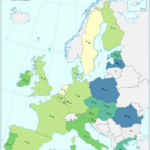
Road Safety of Pedestrians in the EU is highlighted at the Traffic Safety Basic Facts 2011 recently released at the European Road Safety Observatory of the European Commission as prepared by the DACOTA project. 6.641 pedestrians were killed in road traffic accidents in the EU countries in 2009, which is 20% of all fatalities. This figure represents a 34% decrease in relation to the 9.476 pedestrian fatalities since ten years before in 2000. 
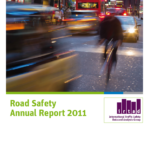
The International Road Traffic and Accident Database (IRTAD) of the International Transport Forum (ITF/OECD) published the Annual Report 2011, which comprises a synthesis of the main trends and road safety indicators for the year 2010 and preliminary data for the year 2011. It presents longer-term trends in order to better understand the developments taking place in the different countries. It also presents a summary of national road safety strategies and related targets that have been developed in IRTAD countries in the context of the UN Decade of Action for Road Safety. Recent safety measures implemented are highlighted together with detailed safety data by road user, location and age. Moreover, a report activity of the IRTAD Group for the year 2010 summarising the activities of the Group and detailed reports from 32 countries are presented. NTUA has contributed to the detailed report for Greece. 
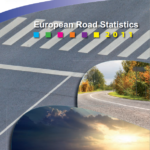
The European Union Road Federation (ERF) released recently the ERF 2011 European Road Statistics. This annual publication contains all essential information on the road transport sectorfor the period 1990-2009 for the EU countries, but also for other countries in Europe and worldwide. These statistics concern the road network, infrastructure financing, road maintenance and investing, goods and passenger transport, road safety, taxation and environement. The road safety section contains road fatalities time series, country rankings, safety indicators and basic fatalities characteristics. 
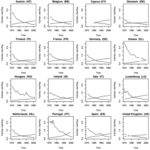
A research titled ‘Autoregressive nonlinear time-series modeling of traffic fatalities in Europe’ co-authored by G.Yannis, C.Antoniou and E.Papadimitriou from NTUA, was published in the Journal European Transport Research Review in August 2011. A macroscopic analysis of road-safety in Europe at the country level is proposed through the application of non-linear models correlating fatalities and vehicles for the period between 1970 and 2002. The proposed models can prove useful for assessing the road safety performance of the examined countries, as well as for obtaining some insight on the current and future trends of less developed countries. 

Directorate General for Mobility and Transport (DG Move) of the European Commission released the Statistical Pocketbook 2011 ‘EU Transport in figures‘. In this Statistical Pocketbook, key road safety Tables are contained, together with several other Tables on transport statistics, providing a complete picture of current trends in transport in Europe. Data on road fatalities for the EU member states and associate countries allowed for time series comparisons and country rankings. 

The European Commission has published new statistics showing that EU road fatalities decreased by 11% in 2010. However, country by country statistics show that the number of deaths still varies greatly across the EU. Most countries achieved double-digit reductions in the number of road deaths over the past year, the best ones being Luxembourg (33%), Malta (29%) Sweden (26%) and Slovakia (26%). However there is still a lot of work to be done. 
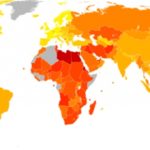
In Wikipedia, several road fatalities data sources were combined in order to produce the world list of traffic-related death rates: the annual number of road fatalities per capita, per vehicle fleet and per vehicle-kms. According to the World Health Organization motor vehicle collisions are the 6th most common cause of death in developed nations with an average rate of 20.8 per 100,000 populations in the year 2000 (30.8 for males, 11.0 for females). African nations have the world’s highest road traffic injury mortality rates. 

In June 2011, ETSC published the PIN Annual Report. During the period 2001-2010 a decrease of road fatalities of 43% was observed in the 27 EU countries, whereas the respective reduction in Greece was 37%. For the first time, Greece is ranked 27th, with 123 persons killed per million population (EU average 62). The European target of 50% road fatalities reduction in comparison to 2001 was achieved by eight countries. 
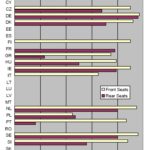
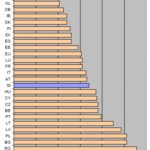
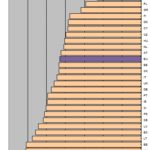
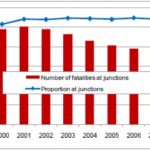
Road Safety at Junctions in the EU is highlighted at the Traffic Safety Basic Facts 2010 recently released at the European Road Safety Observatory of the European Commission as prepared by the DACOTA project. Almost 8.300 people were killed in road traffic accidents at junctions in the EU countries in 2008, representing 21% of the total road traffic fatalities. This figure represents a 30% decrease in relation to the 10.500 fatalities at junctions since ten years before in 1999. 
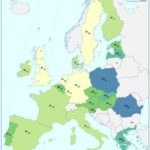
The detailed main road safety figures of the EU are highlighted at the Traffic Safety Basic Facts 2010, recently released at the European Road Safety Observatory of the European Commission as prepared by the DACOTA project. The Netherlands, United Kingdom and Sweden are the best performing EU countries, as far as fatalities per population is concerned, whereas Greece, Romania and Poland are those with the lowest performance. 
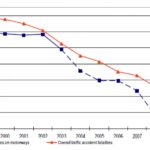
Road Safety on Motorways in the EU is highlighted at the Traffic Safety Basic Facts 2010 recently released at the European Road Safety Observatory of the European Commission as prepared by the DACOTA project. 1.654 persons were killed in road traffic accidents on motorways in 16 EU countries in 2008, representing almost 7% of the total road traffic fatalities. The fatality rate (fatalities per million inhabitants) on motorways decreased by almost 42% between 1999 and 2008, from 8,3 per million inhabitants in 1999 to 4,8 in 2008. 
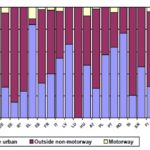
Road Safety of Motorcycles and Mopeds in the EU is highlighted at the Traffic Safety Basic Facts 2010 recently released at the European Road Safety Observatory of the European Commission as prepared by the DACOTA project. In 2008, 1.213 riders (drivers and passengers) of mopeds and 3.999 riders of motorcycles were killed in road traffic accidents in the EU countries, repersenting 17,7% of the total road traffic fatalities. 
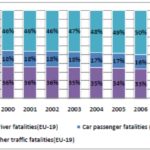
Road Safety of car occupants in the EU is highlighted at the Traffic Safety Basic Facts 2010 recently released at the European Road Safety Observatory of the European Commission as prepared by the DACOTA project. Almost 17.037 car occupants were killed in road traffic accidents in the EU countries in 2008, repersenting 48% of the total road traffic fatalities. This figure represents a 39% decrease in relation to the 27.748 fatalities of car occupants since ten years before in 1999. 
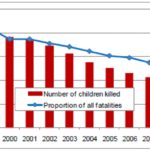
Road Safety of children in the EU is highlighted at the Traffic Safety Basic Facts 2010 recently released at the European Road Safety Observatory of the European Commission as prepared by the DACOTA project. Almost 980 children (<15 years old) were killed in road traffic accidents in the EU countries in 2008. This figure represents a 55% decrease in relation to the 2.155 children fatalities since ten years before in 1999. 
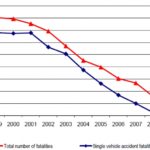
European Road Safety Observatory of the European Commission as prepared by the DACOTA project. More than 106.000 persons were killed in single vehicle accidents in EU within the decade 1999-2008. This number represents one third of all traffic accident fatalities in those countries (33%). The number of people killed in single vehicle accidents in 2008 was 35% less than in 1999. 
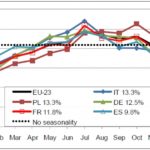
Road Safety by Seasonability in the EU is highlighted at the Traffic Safety Basic Facts 2010 recently released at the European Road Safety Observatory of the European Commission as prepared by the DACOTA project. Although the annual number of people who died in road traffic accidents in Europe has fallen over many years, the distribution of the annual number by month has scarcely changed. Motorcycling is the mode of transport with the most seasonal fatality distribution. 
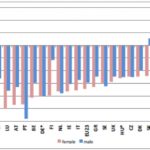
Road Safety by Gender in the EU is highlighted at the Traffic Safety Basic Facts 2010 recently released at the European Road Safety Observatory of the European Commission as prepared by the DACOTA project. In 2008, 36.721 people were killed in road traffic accidents throughout the EU, a reduction of almost one third since 1999 (30.1%). The number of people killed in road accidents in the EU decreased between 1999 and 2008 by 29% for males and 34% for females. The reductions in most countries were greater for female fatalities than for male. 
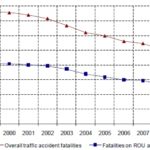
Road Safety outside Urban Areas in the EU is highlighted at the Traffic Safety Basic Facts 2010 recently released at the European Road Safety Observatory of the European Commission as prepared by the DACOTA project. More than 20.500 people were killed in traffic accidents on roads outside urban areas in the EU countries in 2008. Fatalities on roads outside urban areas were reduced by 36% between 1999 and 2008. 
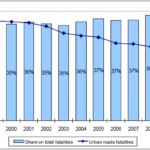
Road Safety in Urban Areas in the EU is highlighted at the Traffic Safety Basic Facts 2010 recently released at the European Road Safety Observatory of the European Commission as prepared by the DACOTA project. 13.502 people were killed in traffic accidents on urban roads in the EU countries in 2008, repersenting 38% of the total road traffic fatalities. Fatalities on urban roads were reduced by 26% between 1999 and 2008. 
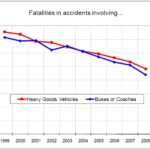
Road Safety of Heavy Goods Vehicles and Buses in the EU is highlighted at the Traffic Safety Basic Facts 2010 recently released at the European Road Safety Observatory of the European Commission as prepared by the DACOTA project. More than 5.200 people were killed in road traffic accidents involving HGVs and more than 950 people died in road traffic accidents involving buses or coaches in the EU countries in 2008. The annual number of people killed in road traffic accidents involving HGVs, buses or coaches fell by almost 40% between 1999 and 2008. 
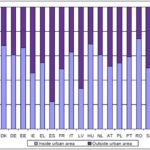
Road Safety of Cyclists in the EU is highlighted at the Traffic Safety Basic Facts 2010 recently released at the European Road Safety Observatory of the European Commission as prepared by the DACOTA project. In 2008, 2.440 pedal cyclists were killed in road traffic accidents in the EU countries, repersenting 6,5% of the total road traffic fatalities. The figure represents a 29% decrease during the decade 1999-2008. 
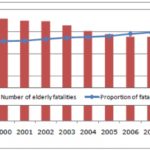
Road Safety of the Elderly in the EU is highlighted at the Traffic Safety Basic Facts 2010 recently released at the European Road Safety Observatory of the European Commission as prepared by the DACOTA project. Almost 7.150 elderly people (>64 years old) were killed in road traffic accidents in the EU countries in 2008. This figure constitutes 20,1% of road traffic fatalities of all ages in 2008. The number of elderly people who died in road traffic accidents fell by almost a quarter between 1999 and 2008. 
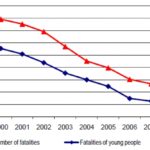
Road Safety of Young people in the EU is highlighted at the Traffic Safety Basic Facts 2010 recently released at the European Road Safety Observatory of the European Commission as prepared by the DACOTA project. 6.421 young people (aged 18-24 years old) were killed in road traffic accidents in the EU countries in 2008. This figure represents a 40% decrease in relation to young people fatalities since ten years before in 1999. 
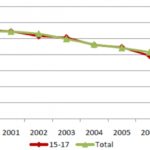
Road Safety of Youngsters in the EU is highlighted at the Traffic Safety Basic Facts 2010 recently released at the European Road Safety Observatory of the European Commission as prepared by the DACOTA project. Almost 1.200 youngsters (aged 15-17 years old) were killed in road traffic accidents in the EU countries in 2008. This figure represents a 39,6% decrease in relation to the 1.984 youngster fatalities since ten years before in 1999. 
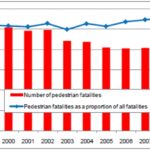
Road Safety of Pedestrians in the EU is highlighted at the Traffic Safety Basic Facts 2010 recently released at the European Road Safety Observatory of the European Commission as prepared by the DACOTA project. 7.638 pedestrians were killed in road traffic accidents in the EU countries in 2008, which is 20.4 % of all fatalities. This figure represents a 25% decrease in relation to the 10.278 pedestrian fatalities since ten years before in 1999. 
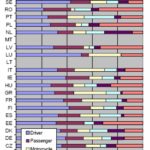
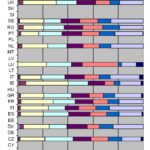
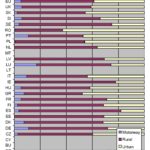
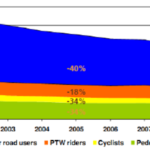
In May 2011, ETSC published a PIN Flash concerning unprotected road users. At least 15,300 pedestrians, cyclists and motorcycle riders were killed in the EU in 2009, and 169,000 since 2001. Deaths among pedestrians and cyclists decreased by 34% between 2001 and 2009 and those among PTW riders by only 18%, compared with 39 % for car drivers.














































































































































































